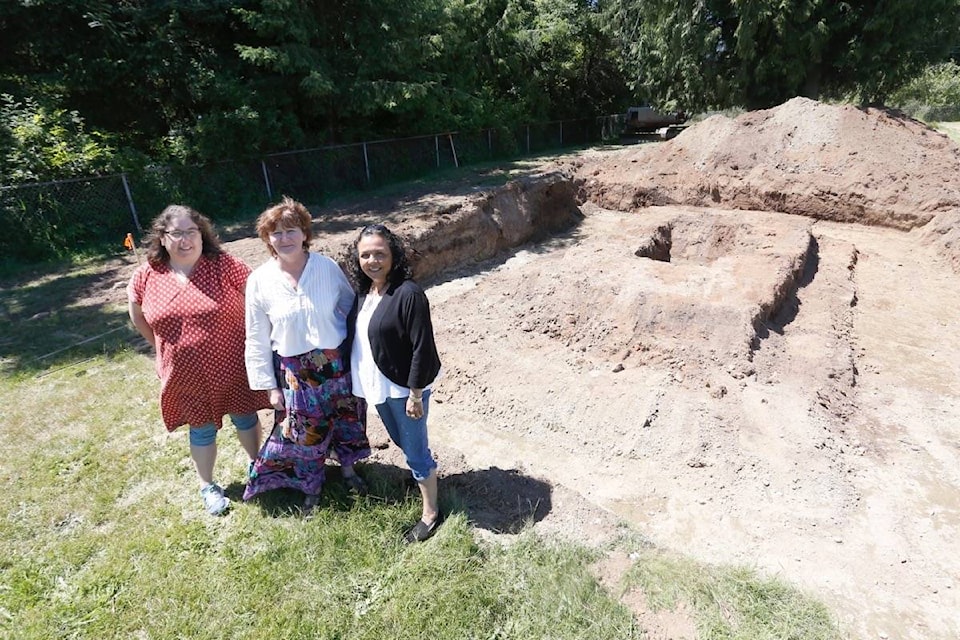A massive hole that’s been dug on Bowser Elementary School grounds will soon be occupied by a new building that organizers hope will usher in greater learning and understanding about First Nations cultures and practices.
The school is on to phase 2 of its outdoor Tulnuxw Ielum Cultural Learning Space project, which involves constructing a traditional aboriginal building beside its existing fire pit and growing garden. Shovels were in the ground Wednesday, June 21.
The school began working on the outdoor learning space last school year, with teacher Laura Bonnor breathing new life into an idea that had been considered but not acted upon in previous years.
A seating area with a fire pit was built last year, and planting of local flora continues. Since then, classes have begun to use the space, either to learn about First Nations culture, or just to have class outside, said Bonnor.
Last year, the school held its first Aboriginal Day event, which included cooking salmon traditionally.
On May 24 this year, the school held a Truth and Reconciliation day, with elders coming to share their stories, lacrosse being played, and clams cooked traditionally.
Colleen Manson, who’s teaching the Hul’qumi’num language as a pilot project at the school, said that having residential school survivors come and share their stories was particularly impactful. “You could hear a pin drop,” she said.
Bringing in First Nations elders, artists and storytellers is part of the overall goal of the cultural learning space, which is to make learning more tangible, said Bonnor.
Instead of just reading textbooks, students need to learn from the people who are still here, said Carrie Reid, SD69’s indigenous resource teacher. Doing that in an outdoor setting goes a long way toward making First Nations culture a present-day concept rather than a historical one, she said.
The community seems to be buying into the idea, with much of the $50,000 needed for the 24- by 36-foot building already raised.
The RDN has pledged $30,000, said Bonnor, while various other local businesses and individuals continue to give.
Sean Reid made a $5,000 donation on behalf of Odyssey Shelfish on June 22.
“It’s very encouraging,” Bonnor said of the response. “Everybody thinks it’s really something that will help our community.”
Ultimately, she plans for the school site to have a large garden with paths winding through it, and that the facility will be open for use by the community.
She said she hopes the building will be usable, if not finished, by September.
